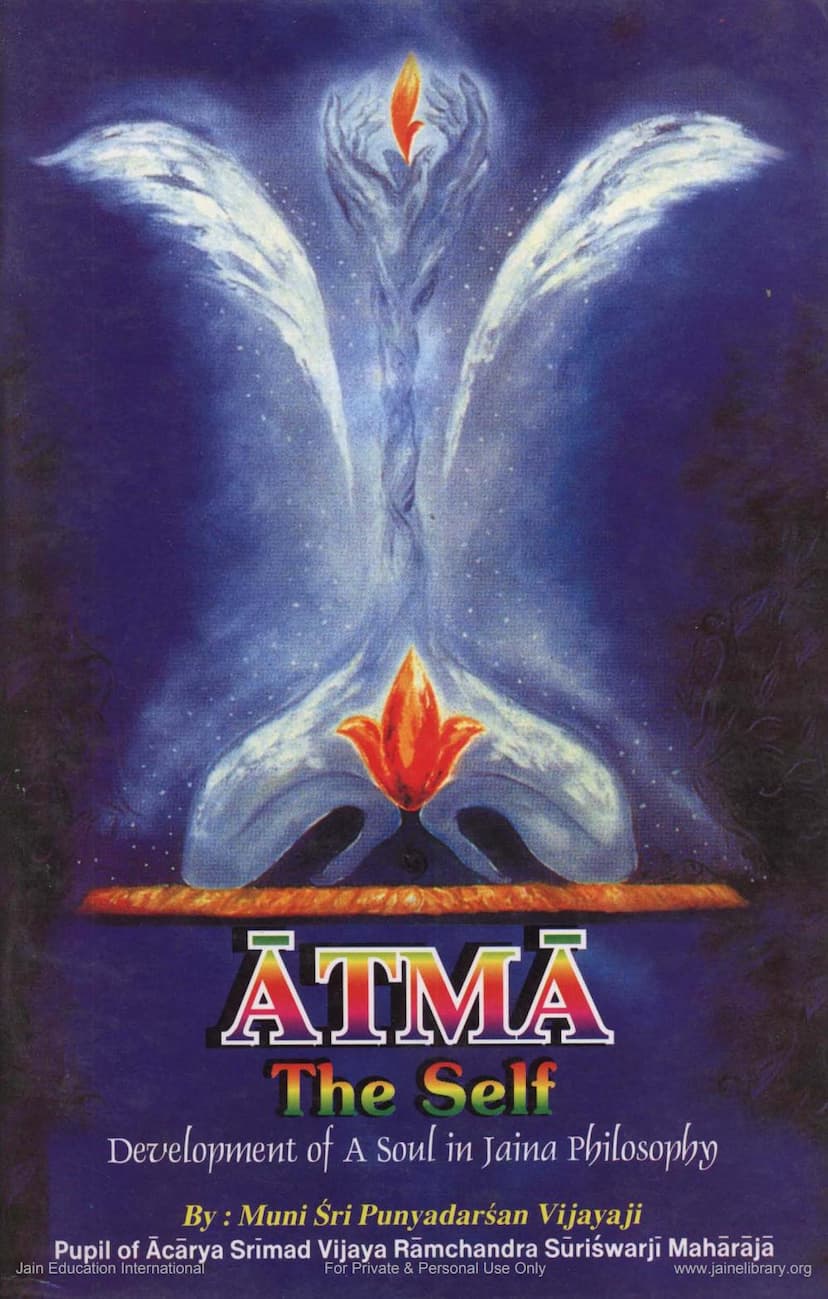Atma The Self
Added to library: September 1, 2025

Summary
This book, "Ātmā: The Self - Development of a Soul in Jaina Philosophy" by Muni Śri Punyadarśan Vijayaji, offers a comprehensive exploration of the Jaina understanding of the soul (Ātmā) and its journey towards liberation. Published by Sanmarg Prakashan, it delves into the intricate philosophy of Jainism, explaining its core tenets in a clear and accessible manner.
The book is dedicated to Muni Śri Punyadarśan Vijayaji's Gurus, Ācārya Srimad Vijaya Rāmacandra Sūriswarji Mahārājā and Ācārya Srimad Kīrtiyasa Sūrīsvaraji Mahārājā. It includes insightful contributions from various spiritual leaders and scholars, highlighting the profound and scientific nature of Jainism.
Key themes and concepts covered in the book include:
- Jaina Philosophy: The book begins by introducing Jaina philosophy as a vast and complete system of thought, grounded in reason and logic. It emphasizes its timeless nature and the foundational principles of the omniscient teachers, the Arhats.
- The Soul (Ātmā): A central focus is the definition and nature of the Ātmā. It is described as an eternal, conscious, and intelligent entity with infinite inherent attributes, currently obscured by karmic matter. The book explores the soul's journey through various stages of existence and its ultimate goal of achieving Siddhatva (Godhood).
- The Cosmos and its Constituents: Jainism's detailed cosmology is explained, outlining the universe as comprising six eternal, imperishable substances: Soul (Jiva), Matter (Pudgala), Ether (Dharma), Medium for Rest (Adharma), Space (Akasha), and Time (Kala). The interactions and nature of these substances are discussed.
- Karmic Theory: The book elaborates on the Jaina theory of karma, explaining how the soul's actions (good or bad) bind it with karmic particles. This bondage leads to the cycle of birth and death (Samsara) and influences one's experiences and future existences. The eight main karmic forces (Ghāti and Aghāti Karma) are detailed.
- The Path to Salvation: The book outlines the Jaina path to liberation (Moksha), emphasizing the "Three Jewels": Right Faith (Samyaktva), Right Knowledge (Samyag Jñāna), and Right Conduct (Samyak Caritra). It details the importance of self-discipline (Samyama), renunciation (Tyāga), and penance (Tapa) in purifying the soul and shedding karmic matter.
- Stages of Spiritual Development (Gunasthanaka): The fourteen stages of spiritual purification are presented, illustrating the soul's gradual progress towards omniscience and liberation.
- The Role of the Mind: The book highlights the power of the mind and the importance of training it for spiritual advancement. It emphasizes the significance of introspection and self-control.
- Ahimsa (Non-Violence): The principle of Ahimsa, considered the supreme virtue in Jainism, is thoroughly explained. It extends beyond merely not killing, encompassing reverence for all forms of life, including microscopic beings, plants, and elements. The concept of Jayana (utmost care and reverence) in daily activities is crucial.
- Syādvāda (Theory of Relativity): The book introduces Syādvāda as a unique Jaina philosophical doctrine that emphasizes the manifold aspects of reality and the relativity of truth. It suggests that understanding a thing requires considering multiple viewpoints.
- Jaina Mathematics and Cosmology: The book delves into Jaina mathematics, presenting complex numerical calculations for time, matter, and souls within the cosmos. It also details the structure of the universe, including various realms and time cycles.
- The Importance of Human Existence: The book stresses the immense value of human birth as the only opportunity for a soul to achieve liberation. It contrasts this with the limited freedoms and experiences of celestial, infernal, and sub-human beings.
- Practical Guidance: The text provides practical guidance through the "35 Rules of Conduct" for beginners (Mārgānusāri) and elaborates on the Jaina Sangha (community) comprising monks, nuns, and lay followers.
In essence, "Ātmā: The Self" serves as an in-depth guide to understanding the Jaina perspective on the soul's journey. It aims to inspire readers to pursue spiritual purification, attain self-conquest, and ultimately achieve the ultimate goal of eternal bliss and liberation (Moksha). The book emphasizes that one is the architect of their own destiny and that through sincere practice of Jaina principles, spiritual perfection is attainable.